Hey there! Today, I want to share something close to my heart: a humble bowl of comfort, born from memory, warmth, and quiet joy. It’s more than just a recipe — it’s a feeling I return to again and again. A dish that tastes like home, like slow afternoons, like love you don’t need to explain.
Cooking has always been more than just a routine in my life — it’s been a way of connecting, remembering, and expressing love. As a child, with both of my parents working long hours, I spent most of my time with my Korean grandmother. Her kitchen became my playground, and Korean food became my first language of comfort.
Even now, without thinking, I find myself drawn back to those flavors. Korean food isn’t just something I cook — it’s part of who I am. We don’t choose our roots, but they hold us, shape us, carry us forward. Our traditions, our memories, our quiet rituals — they live in every spoonful.
Traditional food, especially, holds a certain kind of magic. It doesn’t just feed — it comforts. It wraps around you like a memory, like a soft blanket on a rainy day. Some dishes feel like companionship, even in solitude. This ramen is one of those.
More info: Instagram | irinatisserandstudio.com
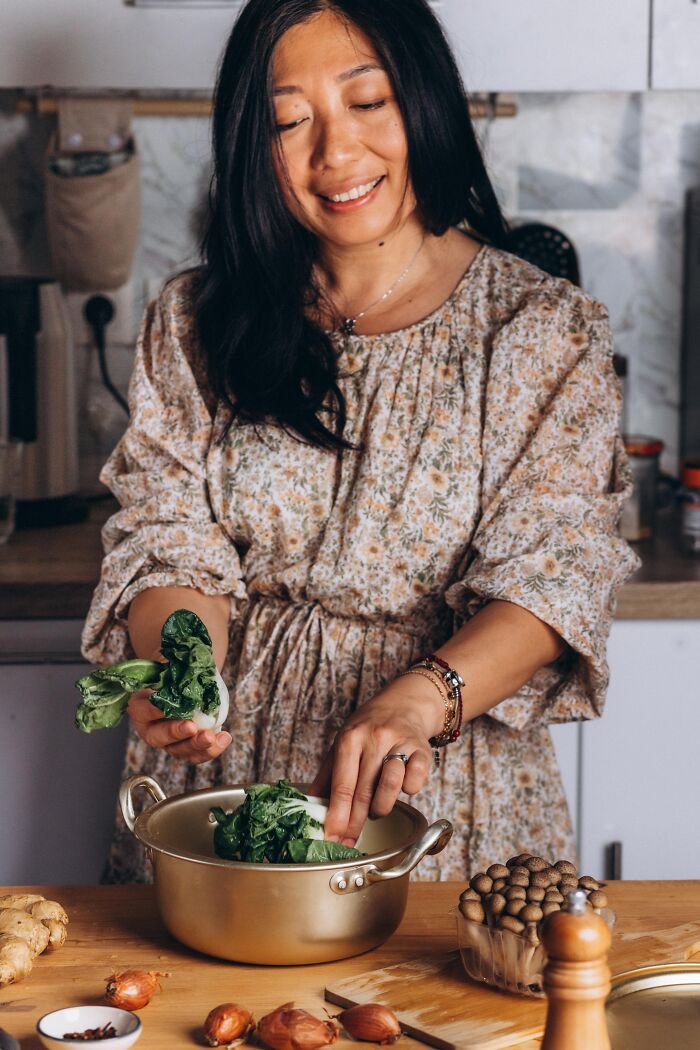
You might know ramen as a Japanese dish, and you’re right — its roots trace back to Japan, where it evolved from Chinese wheat noodles into countless regional variations. In Korea, the dish is called ramyeon, and it took on its own bold identity. Most Koreans think of the spicy instant variety — quick, fiery, and beloved in every household.
But there’s another, quieter side to Korean cooking, often inspired by temple cuisine — the food traditionally prepared in Buddhist monasteries. It’s plant-based, mindful, and full of harmony. That’s the spirit I drew from for this recipe: something gentle, grounding, and deeply nourishing.
This recipe is my take on vegetarian Korean ramen — a plant-based, slightly modern version of a dish that feels like a hug in a bowl.
Even if you’re not vegetarian, I hope you’ll give it a try. You might be surprised by how satisfying and rich it can be — without needing much at all.
Here’s how to make one-pot miso ramen with baby pak choi & shimeji mushrooms inspired by my childhood kitchen

Prep Time: 5 minutes
Cook Time: 10–12 minutes
Total: Under 20 minutes
Serves: 2
Ingredients you need for this recipe:
- 2 baby pak choi (halved or quartered if large)
- ½ box of shimeji mushrooms (separated)
- 1 onion (sliced)
- 3–4 garlic cloves (smashed)
- 2 slices of fresh ginger (peeled with a teaspoon)
- 1 tbsp low-sodium soy sauce (Korean or Japanese)
- 1 tsp white miso paste
- Approx. 34 fluid ounces (1 liter) vegetable broth
Optional Add-ins:
- Noodles (ramen, soba, or rice noodles)
- Soft-boiled egg or tofu
- Black sesame seeds or chopped green onions
Just 4 simple steps to bring this bowl of comfort to life:
- Build the base: In a large pot, toss in the fresh vegetables, a splash of soy sauce, a spoonful of miso paste, and pour over the vegetable broth.
- Let it bloom: Simmer gently for 10–12 minutes, giving the flavors time to melt together into a rich, soul-warming broth.
- Make it yours: Stir in pre-cooked noodles or spoon in some fluffy steamed rice. For a heartier version, add a soft-boiled egg or silken tofu.
- Finish with flair: Top with a sprinkle of sesame seeds or a handful of chopped green onions. Serve hot and enjoy every cozy, nourishing spoonful.
Stud an onion with cloves, add soy sauce, and let it all simmer — in just 10 minutes, the aroma is irresistible!
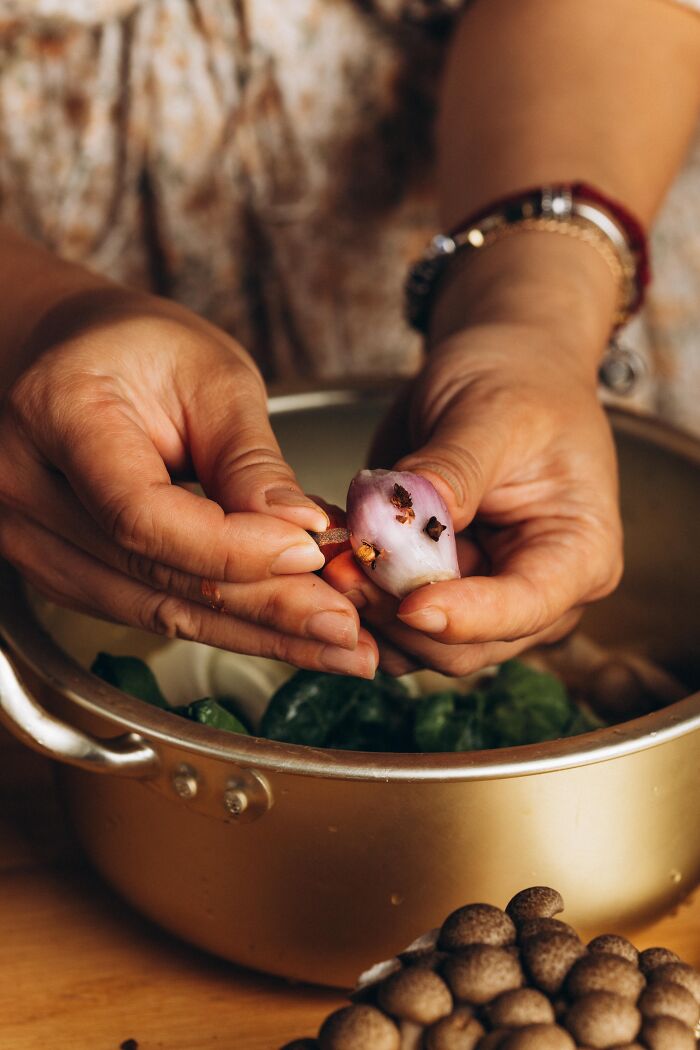
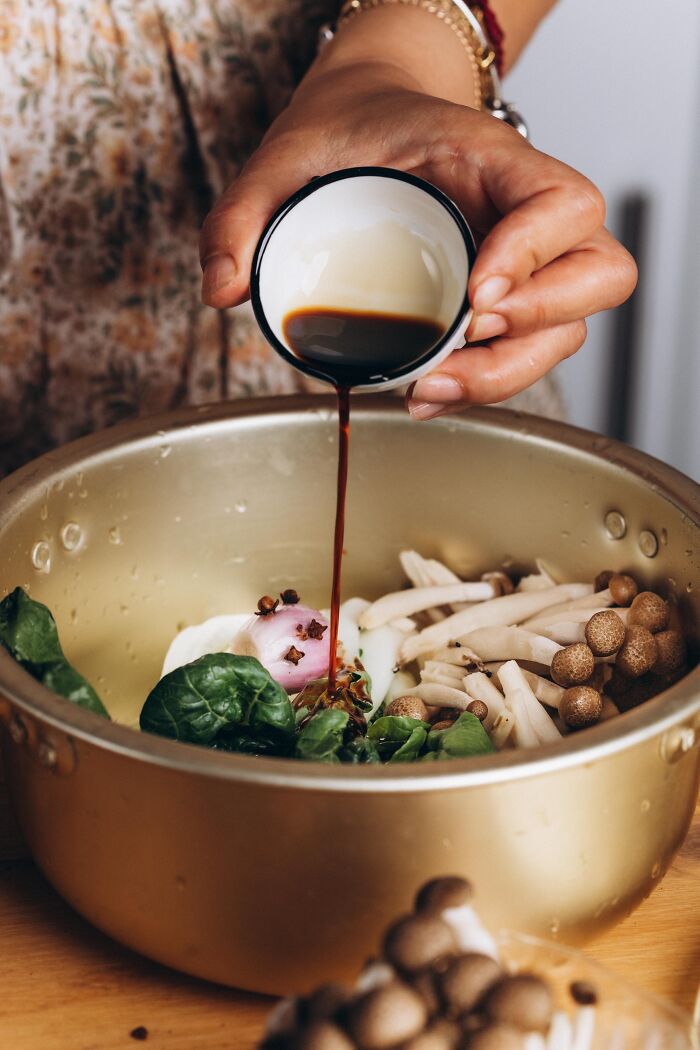
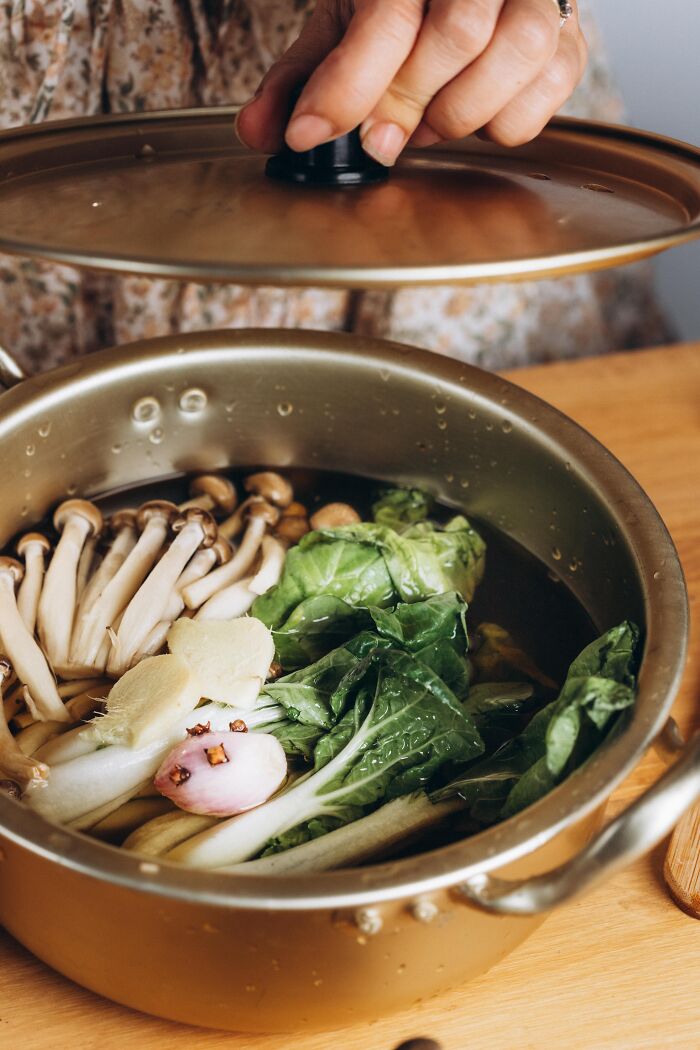
Where to find the ingredients
I usually shop at Korean supermarkets when I can — the Korean community in France is small, but growing, and more ingredients are becoming available. Asian supermarkets (especially Chinese and Vietnamese) are also great and often more affordable.
Essentials to look for:
- Soy sauce: Low-sodium versions, ideally Korean or Japanese — they’re smoother and cleaner in taste.
- Miso paste: Adds essential umami and body to the broth.
- Fresh vegetables: Baby pak choi, shimeji mushrooms, ginger, garlic — all easily found in most Asian or organic markets.
I love adding silky noodles or a spoonful of steamed rice to make it extra comforting
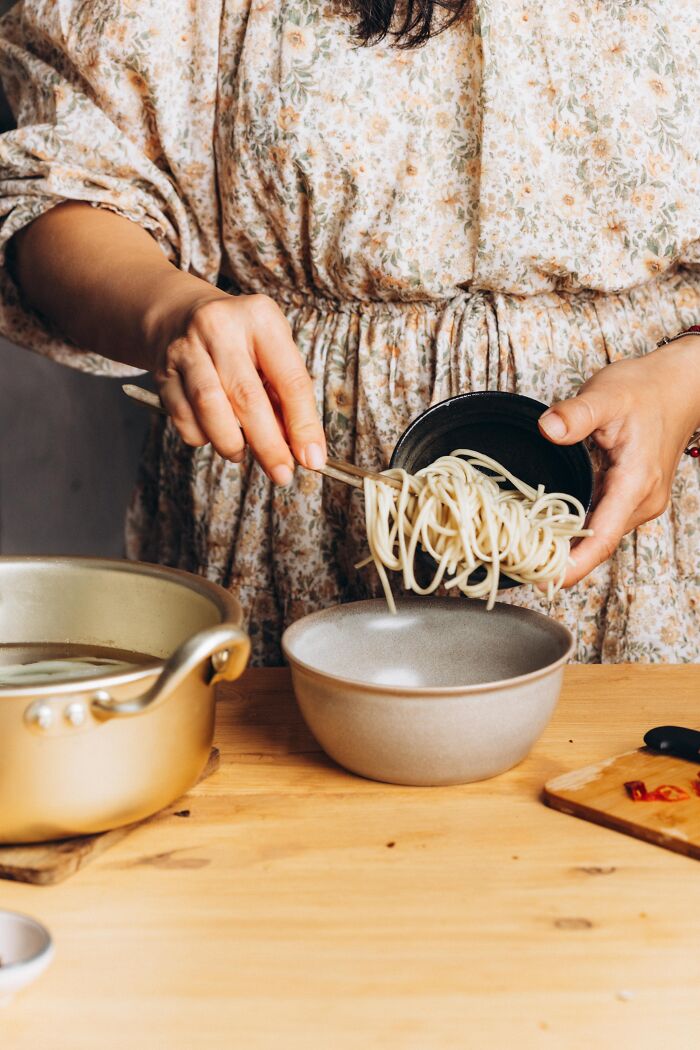

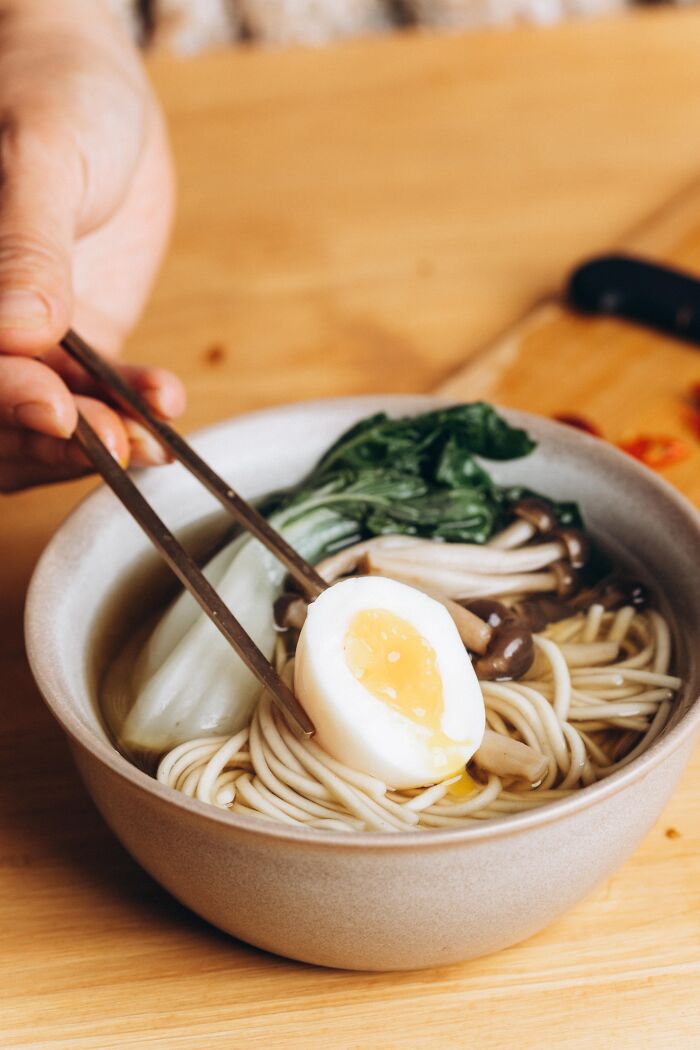
This is a dish I make when I need a little quiet — a soft evening, a reset, a moment to myself. It brings me back to rainy afternoons with my grandmother, when everything smelled of ginger and warmth, and nothing felt rushed.
I hope this ramen brings you the same kind of comfort. Let me know if you make it — I’d love to hear what memories or feelings it stirs in you.
Until next time — for more stories, more flavors, and more moments of meaning.
From my kitchen to yours: a little warmth, a little soul, and a lot of love — all in one bowl!
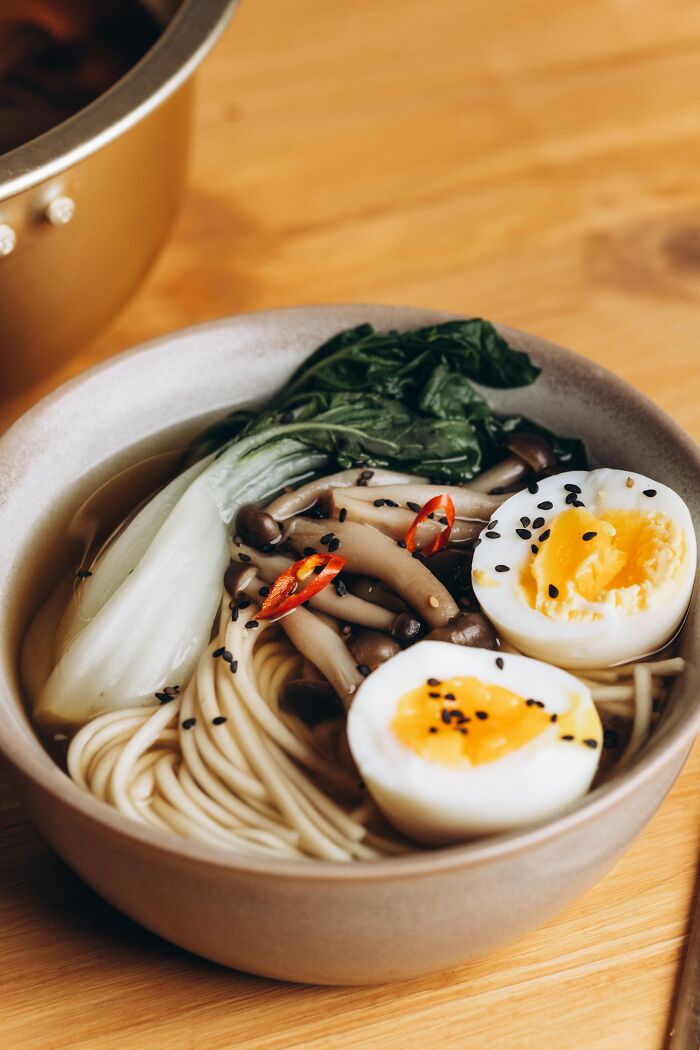
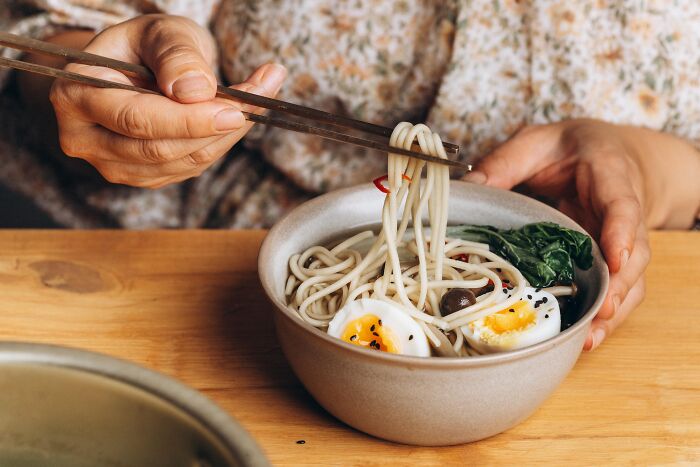
Moderator’s Note
We’re here to celebrate food, culture, and the personal stories behind each dish. If this recipe isn’t quite to your taste, that’s okay—there’s room for all kinds of approaches and opinions. We encourage thoughtful, respectful discussion and love hearing about your own memories or variations. Want to share yours? Click here to submit your story on Bored Panda!
from Bored Panda https://ift.tt/P8Cb4mq
via IFTTT source site : boredpanda